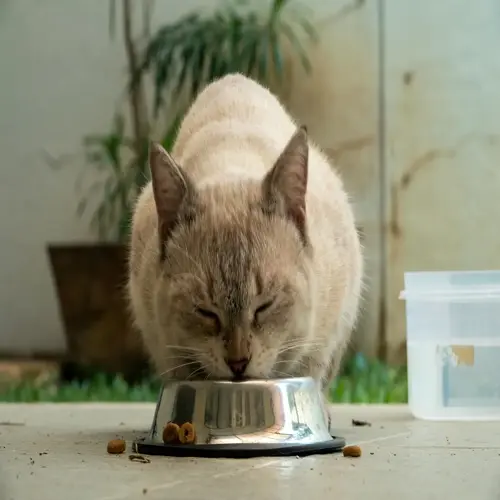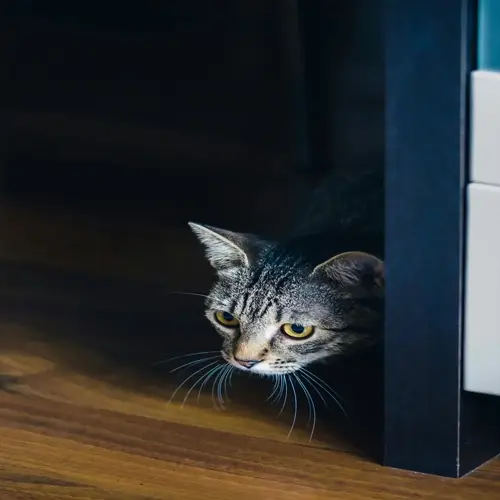Cat Nail Trimming: The Ultimate Guide

Written by
Hoang Long
Reviewed by
Prof. Edward Clarke, Ph.D.Regular nail trimming of your cat prevents painful ingrown claws, as well as damage to furniture and carpets
You may notice their claws have grown if the tips are visible while resting or snagging on fabrics
To prepare your cat, desensitize the paws and create a positive association with the clippers
You should trim your cat's claws 45° angles and little by little, being careful to avoid the pinkish area called the quick
If bleeding occurs, you can apply styptic powder and if aggression occurs, practice with small trims at a time so they can become desensitized to the experience
Never declaw your cat; simply trimming for the sake of humane and comfort keeps your cat's mobility and natural behavior intact
Article Navigation
Regular cat nail trimming protects your furniture while preventing painful ingrown claws that pierce paw pads. I have seen cats limp from untreated overgrowth. By keeping claws healthy, this issue is avoided every 2-4 weeks. Proper technique also helps maintain the vital social and physical functions of claws, such as stretching.
Learn to prevent sudden cessation of bleeding accidents. Start with one claw at a time at idle moments. My own cat was initially a bit hesitant about this method. Patience has helped me to make nervous cats more readily accustomed to being handled. I reward them for small successes by giving food. This builds confidence mutually over the course of weeks.
Essential Tools for Success
Clippers that use scissors provide precision control useful for thin claws. I like them for kittens and young cats. They have sharp blades and cut cleanly without crushing. Please do not use them on thick senior claws. They require steady hands to use properly and prevent jagged edges from forming.
Durability of guillotine-style accessories is good for those who use them frequently. A common beginner problem is inserting the claw correctly. Many owners experience issues with alignment. My first attempts caused splintering. Begin with carrot sticks. Their spring mechanism is best suited for cats with medium-thickness claws, who are generally compliant.
Plier-type clippers will help solve the problem of thick claws in elderly cats. It reduces the pressure on the arthritic paws due to the leverage gained. I recommend this type of clipper for cats over 10 years of age. The wider blade helps to prevent splitting of brittle claws. Always make a trial cut on one nail before proceeding with the entire job.
Electric grinders are an issue for many cats due to their noise sensitivity, which can take weeks to desensitize them to. Begin by having it running nearby while they get their meals. Do not force contact! Two years later, my cat still goes into a panic. The clippers will always be better for the noise-sensitive feline, because they take some skill.
Signs Your Cat Needs a Trim
Do you see claws visible while resting? Healthy claws retract completely when relaxed. Overgrown claws are constantly extended because insufficient scratching does not wear them down. My cat Mittens had this problem before she developed ingrown claws. Check your cat's paws when snoozing deeply for definite signs.
Frequent fabric snagging suggests a serious curvature problem. If claws stab carpets or curtains, there is severe hooking. I have repaired many torn curtains from this. Curved claws dig into foot pads if not corrected. Listen for tearing sounds during normal movement, which is a definite warning.
Notice clicking noises when the dog walks on a hard surface? That means they are hitting the tile noisily with their nails because their nails are too long and do not retract beneath the protective fur of their feet. The aforementioned resembles people walking on hardwood floors with very high-heeled shoes. Occasional tapping is normal, but if clicking occurs regularly, the nails must be trimmed immediately.
Cats skipping scratching posts may have arthritis pain. Too-long claws will curl back into rug pads, making scratching painful when done. Observe halfhearted attempts and withdrawal. Elderly cats, especially, will avoid surfaces that are upward. This is a physical issue, not a sign of disinterest. It is a health flag needing attention.
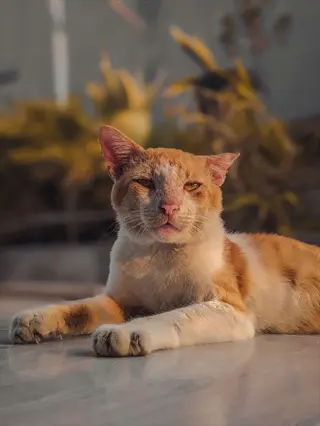
Visible Claws at Rest
- When your cat is relaxed and sleeping, their claws should naturally retract. If you consistently see the sharp tips protruding even during rest, it means they've grown too long to retract fully into the paw pads.
- This is especially common in senior cats with arthritis who can't scratch effectively. Gently lift a front paw while they're drowsy to check claw length without stress.
- Healthy claws should only be visible during active scratching or stretching. Persistent visibility indicates overdue trimming.
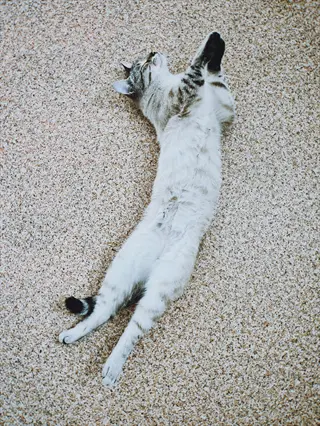
Snagging on Fabrics
- If your cat's claws frequently catch on soft furnishings like blankets, curtains, or carpets during normal movement, this signals excessive length and curvature.
- Listen for tearing sounds when they walk across upholstered furniture. Severely overgrown claws may even pierce fabric loops, causing panic.
- Regular snagging can lead to broken claws or painful pad injuries if the claw twists during extraction.
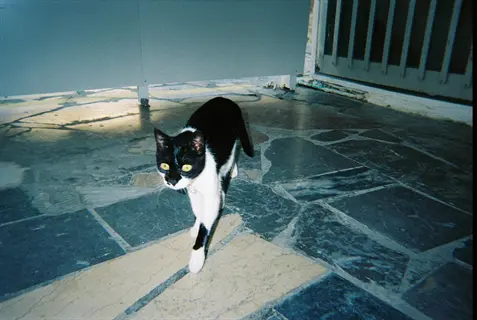
Clicking Sounds
- A distinct tapping or clicking noise when your cat walks on hard surfaces like tile, wood, or laminate means claws are making contact instead of retracting.
- This occurs because overgrown claws extend beyond the protective fur covering the paw pads. The sound resembles human footsteps in hard-soled shoes.
- Measure frequency: Occasional clicks might be normal, but consistent clicking on every step requires attention.
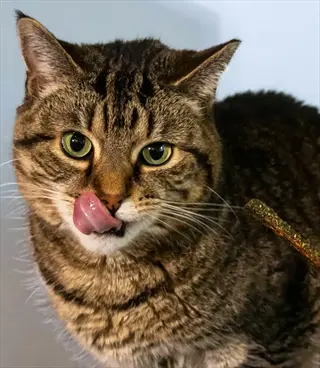
Avoiding Scratching Posts
- Cats who suddenly stop using their scratching posts may find the motion painful due to overgrown claws curling into their pads.
- Watch for half-hearted attempts where they start scratching but stop abruptly. Senior cats might completely avoid vertical surfaces.
- This behavior differs from normal disinterest. If they sniff or approach scratchers but won't engage, claws likely need trimming.
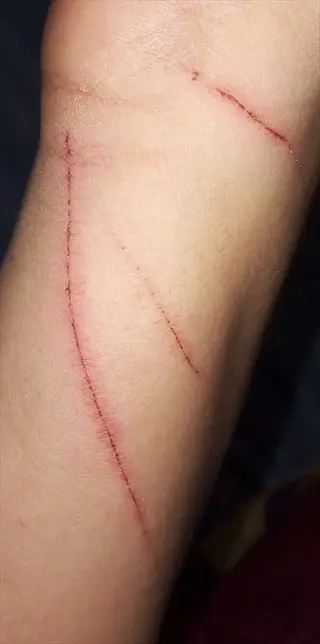
Accidental Scratches
- During normal play or lap-sitting, excessively sharp claws cause deeper scratches than usual, sometimes drawing blood through clothing.
- Note if scratches happen during gentle activities like kneading or stretching, not just during rowdy play sessions.
- While cats naturally have sharp claws, abnormal severity indicates the tips haven't worn down through normal scratching behavior.
Preparing for Trimming
Schedule shaving appointments 20 minutes after meals when digestive activity naturally induces sleepiness. During this period, cats are more amenable. For our three, I have found that the best time for trimming is after breakfast. Avoid forcing a cat to interact if it seems alert or is agitated.
Begin paw desensitization a few days before the actual trimming. Take your feet in hand for 3 seconds and gently pet them, then release. Gradually increase the duration, adding treats daily as tolerated. My rescue cat needed seven days to approve of the handling. Stop always before a sign of discomfort appears.
Ensure clippers are neutral objects in their environment, either by placing them near food bowls during meal times. After two days, hold the clippers when you pet the cat, and click the blades gently away from the cat when he is receiving a treat. This builds up a superb association. I've used the successful method for years.
Control your environment by selecting a quiet place with closed doors. Use clipper/cloning powder and towels before attaching. Use bright lighting and control the slip of the animal.
Optimal Timing Selection
- Schedule sessions when your cat is naturally drowsy, typically 20-30 minutes after eating when digestion makes them relaxed. Avoid high-energy periods like after naps.
- Observe your cat's daily rhythm: Many cats have predictable calm windows mid-morning or late evening when they're receptive to handling.
- Never force interaction if your cat seems agitated. Postpone if there are environmental stressors like loud noises or unfamiliar visitors.
Paw Desensitization Routine
- Begin daily 3-second paw massages without tools. Gently hold one paw while petting, releasing before your cat shows discomfort.
- Gradually increase pressure over 5-7 days until you can lightly squeeze pads to extend claws. Reward with treats immediately after release.
- For resistant cats, start during sleep: Briefly touch paws while they're deeply asleep, stopping if they stir. This builds subconscious tolerance.
Clipper Familiarization
- Place clippers near food bowls during meals so your cat associates them with positive experiences. Don't move them during this phase.
- After 2-3 days, hold clippers while petting your cat. Click them gently away from the cat, rewarding calm behavior with treats.
- Progress to touching claws with closed clippers. Mimic trimming motions without cutting, always followed by immediate rewards.
Environment Preparation
- Choose a quiet room with door closed. Remove visual distractions by closing curtains and turning off TVs/screens.
- Setup supplies beforehand: clippers, styptic powder, treats, and towel within arm's reach. Use bright directional lighting to illuminate claws clearly.
- Place a non-slip mat on surfaces. For lap sessions, add a folded blanket for cat comfort and to prevent sliding during handling.
Towel Restraint Practice
- Introduce towels positively: Drape loosely over your cat during naps, rewarding with treats when they remain calm under the fabric.
- Practice "purrito" wraps without trimming: Wrap snugly with one leg exposed, then release after 10 seconds with rewards. Increase duration gradually.
- For head cover: Lightly drape a small cloth over the head during feeding. This reduces visual stress during actual sessions.
Step-by-Step Trimming Process
To extend claws, use gentle pad pressure. Hold your cat the opposite way on your lap. Place your thumb on top of the paw pad, fingers underneath. Apply slight pressure behind the claw joint. Do not squeeze the entire foot. Older cats need support under their paws for arthritic joints.
Identify the quick carefully. A light-colored claw shows a pink center with blood vessels. A dark claw will require a sideways shine of the flashlight to reveal the shadows. Trim off tiny slivers until you see a chalky white dot. Always leave 1-2 mms underneath this sensitive area for safety.
Cut with 45° angles following the natural curl of the claw. This protects the walking surface. Position the blades at a 90-degree angle to avoid splitting the claw. Use one clean stroke for each claw. If the claws are heavy, use the plier-type clippers. Maintain steady pressure on the cut and avoid twisting while applying the stroke.
Give immediate rewards after every claw. Let the foot go, and give them high-value treats (such as chicken). It's okay to use specific verbal praise (e.g., "Great job") but only after the foot is released. For multiple toes or claws, wait 5-10 seconds after each for calming strokes.
Positioning and Claw Exposure
- Hold your cat facing away on your lap. Gently grasp one paw, placing your thumb on top of the paw pad and fingers underneath.
- Apply light pressure with your thumb just behind the claw joint until the claw fully extends. Avoid squeezing the entire paw.
- For senior cats: Support arthritic joints with your palm while extending claws to prevent discomfort.
Quick Identification
- In light-colored claws, identify the pink quick running through the center, this contains blood vessels and nerves.
- For dark claws: Shine a flashlight behind the claw to reveal the quick's shadow or trim tiny slivers until seeing a grayish oval.
- Always leave 1-2mm (0.04-0.08 inches) below the quick. The transparent tip beyond this point is safe to cut.
Cutting Technique
- Angle clippers at 45° to the claw's natural curve. This maintains the claw's ground contact surface for walking comfort.
- Position blades perpendicular to the claw (not parallel) to prevent splitting. Make one smooth cut per claw.
- For thick claws: Use pliers-style clippers with spring support. Apply steady pressure, don't crush or twist.
Immediate Reward System
- After each claw cut, release the paw and give a high-value treat like freeze-dried chicken before proceeding.
- Verbal praise should be specific: "Good job!" when releasing, not during cutting which may startle.
- If trimming multiple claws, pause after each one for 5-10 seconds of petting before continuing.
Multi-Claw Management
- Start with front paws only. Complete one paw before moving to the next, not alternating claws.
- Limit initial sessions to 1-2 claws. Over subsequent days, gradually increase to a full paw.
- If claws bleed: Apply styptic powder immediately, then end session. Resume 2-3 days later.
Handling Challenges
To stop bleeding immediately, use styptic powder, apply it to the tip directly with a cotton swab, and hold gently for 60 seconds. If you don't have powder, press the bar of dry soap against your skin. Both are added to my emergency kit, as I've learned that this saves unnecessary visits to the vet.
Immediately pause sessions with aggressive cats and return them to their safe area without scolding. The next time, handle the cat 50% less during the session. Concentrate only on touching the paws and rewarding the cat for that action before trimming its nails. If the situation is chronic, lightly cover the eyes with a towel during the handling phase and then remove it.
Support senior cats on foam-rubber pads while being clipped. Use your palm, not your fingers, to support arthritic limbs. Use quiet grinders for thick claws in 2-second bursts. Limit to one paw a day. Apply a warm compress at 100°F to ease stiffness afterwards.
Look for dark claw quicks by shining a penlight on the side. Trim 0.5 mm microscopic slices until a chalky white dot appears. When in doubt, remove the sharp hook tip. I do this monthly for my black cat instead of full trims to avoid injury.
Bleeding Incidents
- Immediately apply styptic powder directly to the bleeding tip using a cotton swab. Maintain gentle pressure for 60 seconds without squeezing the paw.
- If powder is unavailable, press the nail against a dry bar of soap for 30 seconds to seal vessels. Monitor for 10 minutes to ensure bleeding stops.
- Avoid resuming trimming that day. Check for infection signs (swelling, heat) over the next 48 hours and consult a vet if observed.
Aggressive Resistance
- Stop immediately if your cat hisses, growls, or tenses. Return them to a safe space without punishment.
- Next session: Reduce handling time by 50%. Work only on paw touches with high-value rewards before attempting trimming.
- For persistent aggression: Cover eyes lightly with a towel during handling to reduce visual stress, removing it immediately after trimming.
Senior Cat Limitations
- Place arthritic cats on memory foam pads during trimming to reduce joint pressure. Support limbs with your palm, not fingers.
- Switch to grinders for thicker claws: Use low-speed settings with 2-second bursts to minimize vibration discomfort.
- Limit sessions to one paw per day. Schedule post-trim warm compresses (100°F/38°C) for 5 minutes to ease stiffness.
Dark Claw Identification
- Shine a penlight through the claw sideways to illuminate the quick's shadow. Cut only where light passes through easily.
- Trim microscopic slices (0.5mm/0.02 inches) until seeing a chalky white dot at the center, this signals proximity to the quick.
- When uncertain: Trim just the sharp hook tip rather than attempting significant length reduction. Repeat every 10 days.
Multi-Cat Households
- Isolate cats during trimming: Use separate rooms to prevent stress from others' vocalizations.
- Rotate tools between cats: Disinfect clippers with 70% alcohol after each cat to avoid scent-triggered anxiety.
- Prioritize anxious cats first when they're calmest, typically early morning before feeding routines begin.
5 Common Myths
Declawing is a harmless procedure that doesn't affect a cat's long-term well-being or natural behaviors.
Declawing involves amputating the last bone of each toe, equivalent to cutting off human fingers at the knuckle. This causes chronic pain and alters walking mechanics, often leading to arthritis and litter box avoidance due to paw sensitivity. Declawed cats frequently develop biting behaviors and aggression since they lose their primary defense mechanism, fundamentally changing how they interact with their environment.
Outdoor cats naturally wear down their claws through regular activity and never require human trimming intervention.
While outdoor cats may experience more wear from rough surfaces, their claws still frequently overgrow and curl inward, risking painful ingrown claws or infections. Outdoor cats face higher risks of snagged claws on fences or branches causing traumatic injuries. Regular monitoring and occasional trimming remain essential for all cats regardless of their indoor/outdoor status to maintain healthy claw length.
Nail grinders are always superior to clippers because they eliminate sharp edges and prevent accidental cutting of the quick.
Grinders produce high-frequency vibrations and noise that terrify many cats, triggering stress-related aggression or hiding behaviors. They generate heat through friction that can burn sensitive tissue if held too long against the claw. Clippers provide instant, precise cuts without prolonged contact, making them safer for anxious felines when used with proper quick-identification techniques and styptic powder readiness.
Injuring the quick during a trim will of course lead to a major source of infection, which will require immediate veterinary emergency treatment.
If the quick is cut, this leads to, of course, temporary bleeding and discomfort, which is easily and promptly controlled with styptic powder and rarely any infection occurs if properly handled. Most cases heal completely in two days without treatment. True emergency cases occur only if the bleeding continues over ten minutes or shows signs of pus or discoloration for days afterward.
Cats naturally dislike nail trims irregardless of training techniques since cats are equipped with very sensitive feet.
The sensitivity of the feet may be desensitized slowly with psycho-physical retraining methods such as daily petting of the feet and associated treats. Most cats will get used to the nail trims when they are introduced correctly over a period of several weeks especially if they are begun when the cats are kittens. Most resistance comes from human errors such as poor restraint methods used or a hasty manner rather than from natural biological forces.
Conclusion
Schedule regular trimming every 2-4 weeks. This simple practice prevents painful ingrown claws that damage the pads of your cat's feet. It also allows you to escape your furniture being torn up by unkempt claws! For years, I have enjoyed scratch-free sofas by paying attention to claw care. Your cat is comfortable and mobile.
Make feline nail care a bonding ritual to be done in short positive bursts. Reward relaxed behavior with treats she enjoys. In time, this will develop into a mutual trust. My once anxious cat now purrs while I trim nails. With your patience, you can create a lasting bond beyond grooming.
Learn the correct technique so declawing is never necessary. When you use the proper tools and angles, nail trimming is safe. I've assisted numerous cat owners in overcoming requests to declaw their cats. All your techniques will help preserve the normal behaviors of the cat. Healthy claws are associated with healthy cats, offering the benefits of no surgery and no behavioral changes.
Today, begin with just one claw. Success breeds confidence for you both. Celebrate each small achievement with an instant reward. I started my own journey trimming dewclaws on my own. Your consistency develops strong foot health and a lasting bond with your cat.
External Sources
Frequently Asked Questions
Is trimming cat claws necessary for indoor cats?
Yes, regular trimming prevents painful ingrown claws and reduces furniture damage. Indoor cats lack natural surfaces to wear down claws, leading to overgrowth. Trimming every 2-4 weeks maintains paw health and mobility.
How do I trim nails on a resistant cat?
Use gradual desensitization over 2-3 weeks:
- Start with daily paw touches during naps, rewarding with treats
- Introduce clippers near food bowls to create positive associations
- Progress to towel wraps with one leg exposed for brief sessions
- Trim just one claw per session initially
What's the safest technique to avoid cutting the quick?
Position clippers at 45° angles to the claw curve after extending it with gentle pad pressure. For dark claws, shine a light sideways to identify the quick's shadow before trimming tiny slivers.
Do scratching posts eliminate trimming needs?
No, scratching posts maintain claw health but don't prevent overgrowth. Cats scratch to remove outer sheaths, not shorten length. Regular inspection is essential since curved claws may still require trimming despite scratching behavior.
How can I identify overgrown claws?
Look for these key signs:
- Visible claw tips when your cat is resting or sleeping
- Frequent snagging on carpets or fabrics during movement
- Audible clicking sounds on hard floor surfaces
- Sudden avoidance of scratching posts
Are clippers or grinders better for anxious cats?
Clippers are generally better for anxious cats due to instant cutting without vibration. Grinders cause noise and heat that often trigger fear. Use spring-assisted clippers for thick claws with minimal handling time.
What should I do if my cat bleeds during trimming?
Immediately apply styptic powder with cotton swab pressure for 60 seconds. If unavailable, press the claw against a dry soap bar. Monitor for infection signs like swelling over 48 hours before resuming trimming.
Do cats need all paws trimmed equally?
Prioritize front paws as they grow faster and cause more damage. Hind claws require less frequent trimming but should be checked monthly. Always inspect dewclaws which can curl into pads.
Can I make claws blunt without trimming?
Temporary blunting occurs through scratching rough surfaces, but doesn't shorten length. For elderly cats, textured scratching pads may slightly dull tips, but regular trimming remains essential for health.
Why do cats resist nail trims?
Resistance stems from:
- Sensitive paw nerves triggering instinctive withdrawal
- Previous negative experiences causing fear association
- Improper restraint creating feelings of vulnerability
- Lack of gradual desensitization training
